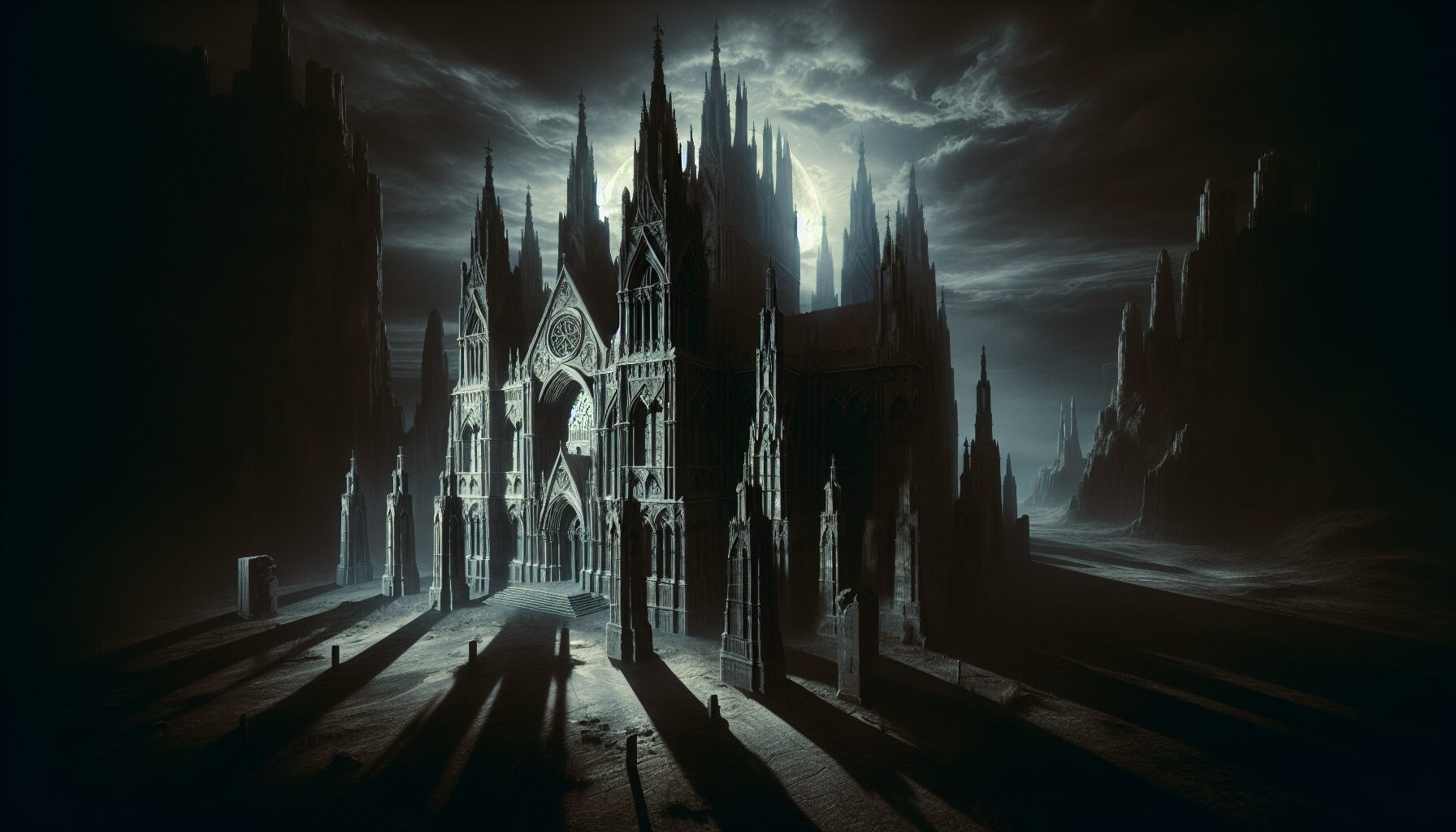Gothic Echoes – Art and Philosophy in Shadow
The Gothic era, spanning from the 12th to the 16th centuries, is a distinctive period in art and philosophy characterized by profound innovations and transformations. The legacy of this era echoes through time, casting shadows that inspire contemporary art and philosophy.
The Architecture of Darkness
Gothic architecture is perhaps the most visible legacy of this period. High pointed arches, ribbed vaults, and the iconic flying buttresses define its architectural style. The cathedrals, basilicas, and churches symbolize the astonishing fusion of beauty and functionality.
“Gothic architecture is a style that wasn’t defined by the surface of walls, but by skeleton construction, emphasizing light and heavenward aspirations.”
These structures, originally designed to instill awe and direct the faithful’s thoughts towards the divine, were as much about theology as they were about structural innovation. Gothic architecture invited both personal introspection and community gathering under the same vaulted roofs.
Philosophical Underpinnings
The Gothic period also marked a significant development in philosophical thought. This era saw a shift from the strictly religious perspectives of the Early Middle Ages to scholasticism, which sought to reconcile faith with reason, following the work of thinkers like Thomas Aquinas.
- Thomas Aquinas: Aquinas played a pivotal role in integrating Aristotelian philosophy with Christian theology, proposing that reason and faith were harmonious rather than oppositional.
- John Duns Scotus: Scotus introduced the idea of the “univocity of being,” suggesting a commonality in the existence between God and humans, promoting a greater understanding of individual significance.
These thinkers paved the way for subsequent philosophical inquiries and emphasized a rational worldview while still deeply grounded in theological foundations.
The Aesthetic of the Sublime and the Grotesque
Gothic art, much like its architecture, was steeped in both beauty and darkness. Illuminated manuscripts, intricate wood carvings, and stained glass windows portrayed biblical stories, often with a dramatic flair. This engagement with shadow and light adds to the gothic aesthetic, conjuring otherworldly yet deeply human experiences.
“In the fantastic, the gothic, and the grotesque, we come to meditate on the limits of the human condition.”
The gothic fascination with the grotesque is particularly compelling, utilizing imagery of monsters and shadowy figures to explore themes of fear, sin, and redemption. These themes resonate in modern horror and dark fantasy literature.
Gothic Revival and Its Resonance Today
The 19th century witnessed a Gothic Revival, particularly in Britain and America, characterized by a romanticized appreciation for medieval aesthetics. This revival extended beyond architecture into literature, as seen in Mary Shelley’s Frankenstein and the works of Edgar Allan Poe.
In contemporary times, the echoes of gothic art and philosophy can be seen in film, literature, and popular culture. From the dark romanticism of Tim Burton’s films to the architectural designs in cities worldwide, the gothic continues to wield influence. The philosophical grappling with the dualities of light and dark, known and unknown, remains prevalent in today’s explorations of existentialism and identity.
The Ongoing Influence of Gothic Thought
Gothic thought invites us to explore the complexities of human emotion and the philosophical inquiries of existence. It challenges us to balance reason and mysticism, light and dark within our understandings of the world.
The dichotomy embraced during the Gothic period reflects our modern tensions as well. As we advance technologically and scientifically, the need for soulful, reflective art and philosophical examination is as crucial now as it was centuries ago.
Conclusion
The Gothic era, with its bold architectural achievements, intricate art, and profound philosophical inquiries, continues to cast long shadows across time. The intertwining threads of beauty and terror, reason and faith are woven into the fabric of our past and present, illustrating how understanding and inspiration often emerge from the shadows.
For those interested in exploring further, resources such as Tate’s Gothic Art Overview and Stanford Encyclopedia of Philosophy offer comprehensive insights into the profound impact and lasting legacy of the Gothic era.

Comments